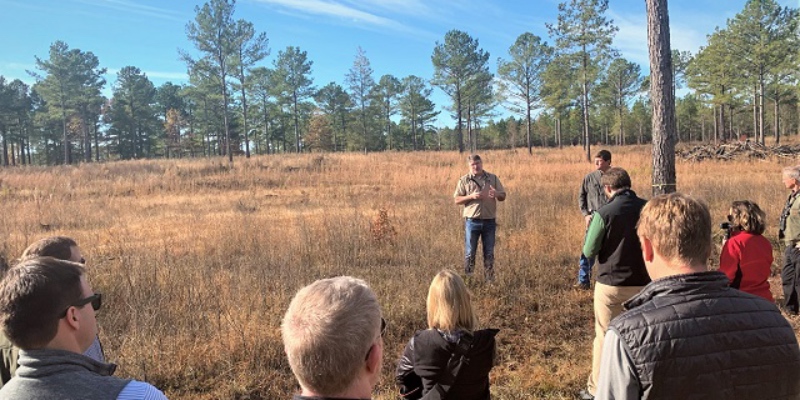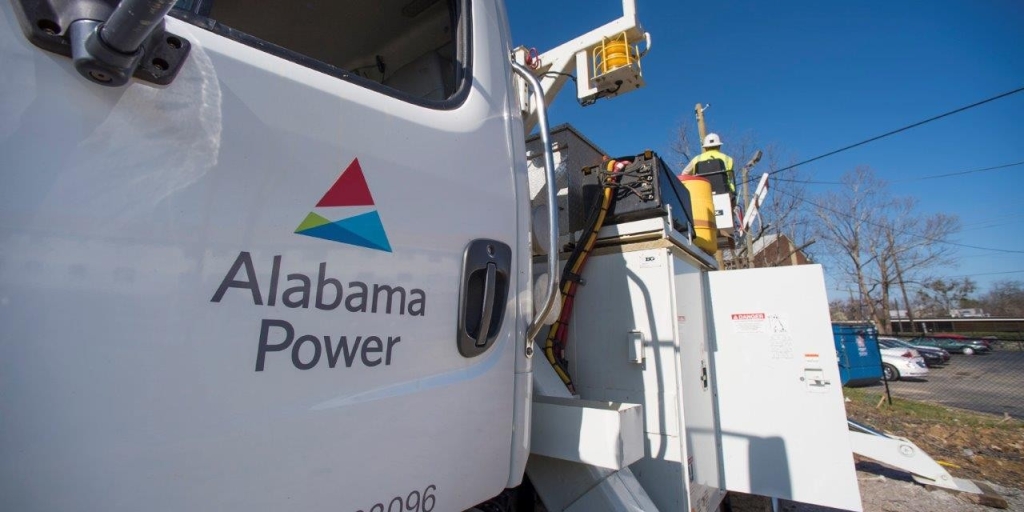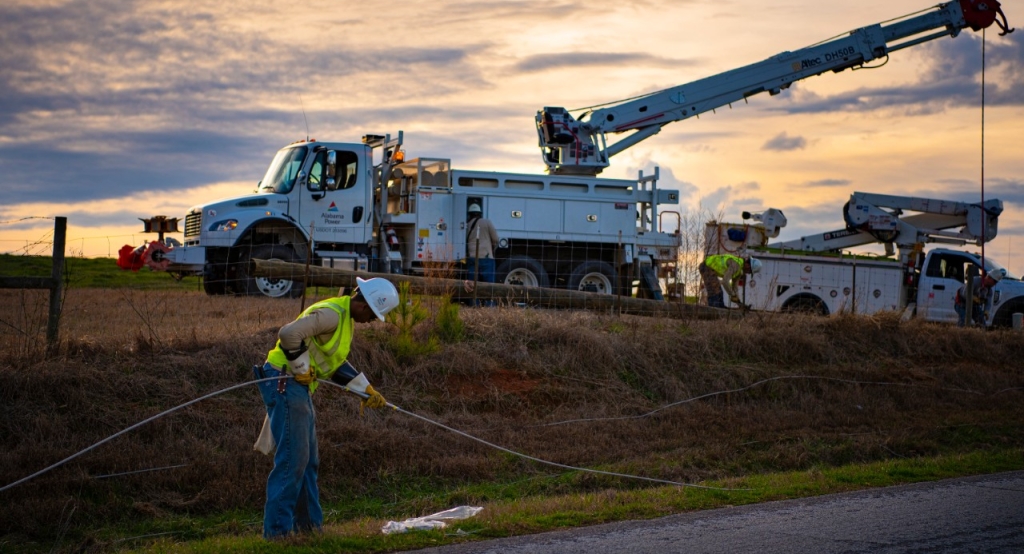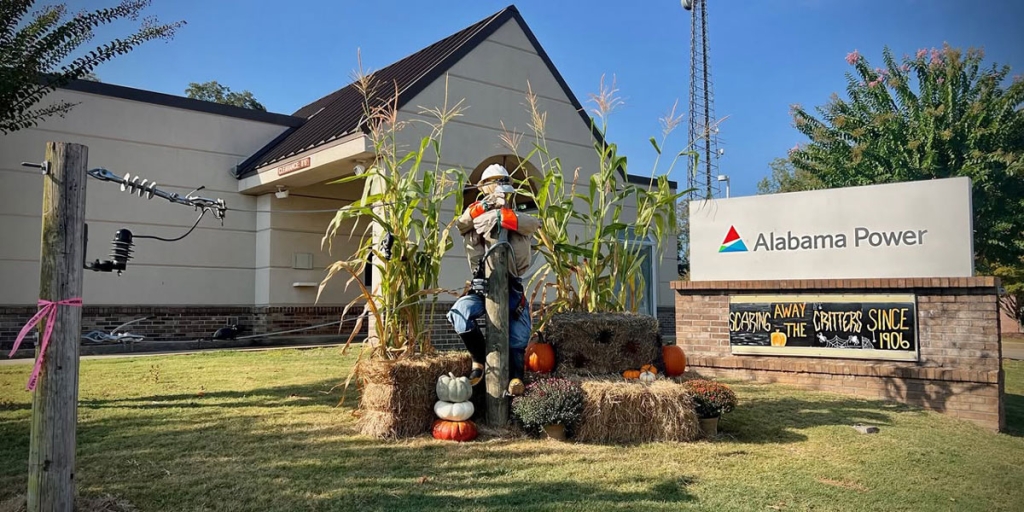Grants from the National Fish and Wildlife Foundation (NFWF) are being used to restore Alabama’s longleaf pine forests and grasslands. One site is near Selma overlooking the Alabama River.
Alabama Power and its parent, Southern Company, are among the supporters of NFWF.
Claude Jenkins, a wildlife biologist with the Alabama Wildlife Federation, gave a tour of the forest Thursday to conservationists who are in Dallas County for a conference.
“The Alabama Wildlife Foundation has been fortunate to receive funding through the National Fish and Wildlife Foundation and Southern Company to assist us in working with landowners to restore habitat for wildlife,” Jenkins said. “Our goal is to work with landowners to establish these grassland communities that are so important to wildlife that are associated with the habitat.”
Across the Southeast, NFWF awarded more than $6.3 million earlier this year to restore, enhance and protect longleaf pine forests in nine states.
Property manager Lee Cummings thanked Jenkins for his insight and help on converting the overgrown forests previously on the land into a grassland with a loblolly pine canopy. The loblolly will be replaced with longleaf over time and the area will be burned on a two-year rotation. The forest will get healthier with time, Cummings said.
“It was just a standard 25-year-old pine plantation, with nothing but pine straw on the ground. We came in and thinned it and burned it, and this is the first year of grassland growth,” Cummings said. “The objectives for this piece of property are solely recreational. Diversity is the name of the game, and we want to manage for turkey, for deer, for quail.“
This year, NFWF grants will support conservation work in Alabama, Florida, Georgia, Louisiana, Mississippi, North Carolina, South Carolina, Texas and Virginia. Together, the grants are expected to establish nearly 11,000 acres of longleaf pine forest and improve more than 305,000 additional acres across the longleaf pine’s historic range.
The grants also will support the recovery of several rare species, including the red-cockaded woodpecker in Alabama and the reticulated flatwoods salamander in Florida.
The grants were awarded through the Longleaf Stewardship Fund, a public-private initiative involving multiple partners, including Alabama Power, Southern Company, the U.S. Department of Agriculture’s (USDA) Natural Resources Conservation Service, the U.S. Forest Service, the U.S. Department of Defense and the U.S. Fish and Wildlife Service.
“We are here today in the heart of the Blackbelt, right outside of Selma to look at some properties that AWF has been managing for a landowner,” said Jason Carlee, an Alabama Power environmental specialist. “It’s really a great opportunity to see some of the restoration work they are doing in this area around prairies and longleaf pine habitat. Alabama Power has had a partnership with AWF for a number of years and has been able to do some great conservation work around the state. Alabama Power is committed to improving the communities where we work and live.”
The longleaf pine ecosystem once encompassed more than 90 million acres across the Southeast but has been reduced to only about 5% of its historic range. The ecosystem possesses tremendous biodiversity, providing habitat for wildlife such as the threatened or near-threatened gopher tortoise, indigo snake and Bachman’s sparrow, as well as important game species such as northern bobwhite quail, wild turkey and white-tailed deer.
(Courtesy of Alabama NewsCenter)













